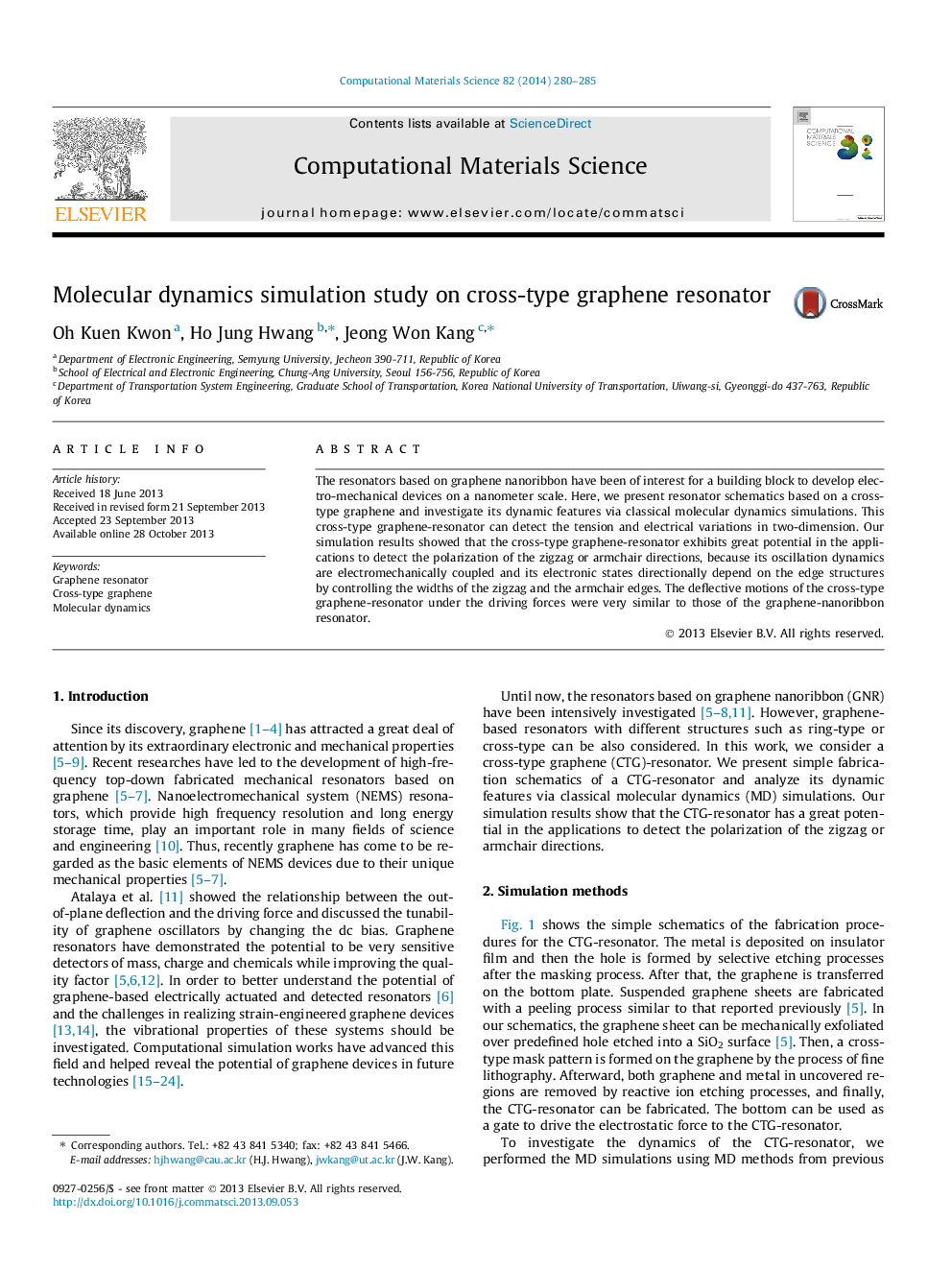| کد مقاله | کد نشریه | سال انتشار | مقاله انگلیسی | نسخه تمام متن |
|---|---|---|---|---|
| 7961092 | 1513927 | 2014 | 6 صفحه PDF | دانلود رایگان |
عنوان انگلیسی مقاله ISI
Molecular dynamics simulation study on cross-type graphene resonator
ترجمه فارسی عنوان
مطالعه شبیه سازی دینامیکی مولکولی بر روی رزوناتور گرافن متقاطع
دانلود مقاله + سفارش ترجمه
دانلود مقاله ISI انگلیسی
رایگان برای ایرانیان
کلمات کلیدی
رزوناتور گرافن، گرافن متقاطع، دینامیک مولکولی،
ترجمه چکیده
رزوناتورهای مبتنی بر نانوروبن گرافن برای ساخت یک بلوک برای توسعه دستگاه های الکترومکانیکی در یک مقیاس نانومقیاس مورد توجه بوده است. در اینجا، ما طرح های رزوناتور بر اساس گرافن متقاطع ارائه می دهیم و ویژگی های پویایی آن را از طریق شبیه سازی های پویایی مولکولی کلاسیک بررسی می کنیم. این گرافن-رزوناتور متقاطع می تواند تنش و تغییرات الکتریکی در ابعاد دو بعدی را تشخیص دهد. نتایج شبیه سازی ما نشان داد که گرافن-رزوناتور متقاطع دارای توان بالایی در برنامه های کاربردی برای تشخیص قطبش زاویه ای جهت زایگاز یا صندلی است؛ زیرا دینامیک نوسان آن با الکترومکانیکی مرتبط است و حالت های الکترونیکی آن به طور خاص به ساختار لبه ها با کنترل عرض ها بستگی دارد از زایگاگ و لبه های صندلی. حرکات انحصاری گرافن-رزوناتور متقاطع تحت نیروهای رانش بسیار شبیه به رزوناتور گرافن-نانوروبن بود.
موضوعات مرتبط
مهندسی و علوم پایه
سایر رشته های مهندسی
مکانیک محاسباتی
چکیده انگلیسی
The resonators based on graphene nanoribbon have been of interest for a building block to develop electro-mechanical devices on a nanometer scale. Here, we present resonator schematics based on a cross-type graphene and investigate its dynamic features via classical molecular dynamics simulations. This cross-type graphene-resonator can detect the tension and electrical variations in two-dimension. Our simulation results showed that the cross-type graphene-resonator exhibits great potential in the applications to detect the polarization of the zigzag or armchair directions, because its oscillation dynamics are electromechanically coupled and its electronic states directionally depend on the edge structures by controlling the widths of the zigzag and the armchair edges. The deflective motions of the cross-type graphene-resonator under the driving forces were very similar to those of the graphene-nanoribbon resonator.
ناشر
Database: Elsevier - ScienceDirect (ساینس دایرکت)
Journal: Computational Materials Science - Volume 82, 1 February 2014, Pages 280-285
Journal: Computational Materials Science - Volume 82, 1 February 2014, Pages 280-285
نویسندگان
Oh Kuen Kwon, Ho Jung Hwang, Jeong Won Kang,
